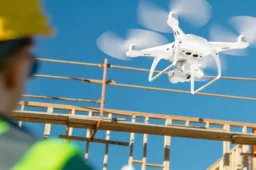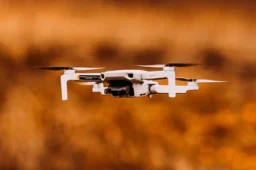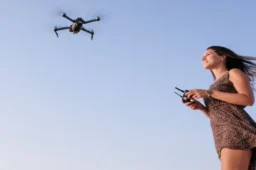
Powerline Inspection Drone
Powerline Inspection Drone: Soaring Towards a Safer, Smarter Grid. The electricity that hums through our lives, powering our homes and businesses, often flows silently through a complex network of overhead power lines. But keeping these vital arteries of energy healthy and efficient requires constant vigilance. Traditionally, this meant sending crews on foot or in helicopters, a risky and cumbersome endeavor. Enter the powerline inspection drone, a technological marvel revolutionizing the way we maintain our electrical grid.
Taking to the Skies for Enhanced Efficiency
Gone are the days of slow, ground-based inspections. Powerline inspection drones, nimble and agile, can navigate vast stretches of power lines in a fraction of the time. They soar effortlessly over challenging terrain, capturing high-resolution images and data that would be impossible to obtain from the ground. This not only saves time and money but also reduces the risk of accidents for human inspectors.
Eyes in the Sky: Seeing Beyond the Obvious
These aerial marvels aren’t just about speed. Powerline inspection drones are equipped with a suite of sophisticated sensors that go beyond the limitations of human vision. High-resolution cameras capture intricate details of the lines, identifying potential problems like corrosion, sagging, and vegetation encroachment. Thermal cameras detect hot spots, indicating potential equipment failure before it leads to outages. LiDAR sensors precisely map the lines, creating 3D models for detailed analysis.
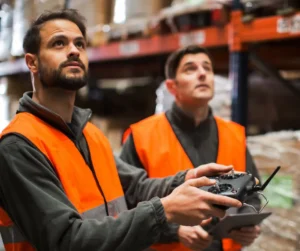
Data-Driven Decisions for a Resilient Grid
The data collected by powerline inspection drones isn’t just stored away in dusty cabinets. Advanced software analyzes the images and sensor readings, automatically identifying potential issues and prioritizing repairs. This data-driven approach allows utility companies to proactively address problems before they cause outages, improving grid reliability and preventing costly repairs.
Beyond Inspections: A Multifaceted Marvel
The applications of powerline inspection drones extend far beyond routine maintenance. They can be deployed for:
- Emergency response: Quickly assessing damage after storms or other natural disasters.
- Wildfire prevention: Identifying vegetation that poses a fire risk to power lines.
- Security: Monitoring for unauthorized access or sabotage attempts.
- Construction and maintenance: Providing a bird’s-eye view of ongoing projects.
The Future of Powerline Inspection
The future of powerline inspection is undoubtedly drone-powered. As technology advances, these aerial workhorses will become even more sophisticated, equipped with artificial intelligence for autonomous flight and automated defect detection. This will further improve efficiency, accuracy, and safety, ensuring a more reliable and resilient grid for generations to come.
Powerline inspection drone price
While the benefits of utilizing drones for powerline inspection are undeniable, the question of cost inevitably looms large. The sticker price, however, is just one piece of the puzzle. Understanding the factors influencing the total investment and the potential return on it is crucial for informed decision-making.
Firstly, the drone itself varies significantly in price, ranging from consumer-grade models in the low thousands to rugged, industrial-grade options exceeding ten thousand dollars. The key lies in finding the sweet spot between affordability and features suited to your specific needs. For instance, intricate inspections within dense power corridors might necessitate powerful, maneuverable drones equipped with high-resolution cameras and LiDAR, whereas simpler inspections over open terrain might be adequately served by more economical models.
Beyond the drone itself, additional factors shaping the overall cost include software licenses for data analysis and mapping, specialized attachments for close-up imaging or thermal inspection, and training for safe and efficient drone operation. Remember, skilled pilots are an invaluable asset, ensuring data quality and mission success.
The good news? The long-term cost savings associated with drone-based inspections can be substantial. Reduced downtime, improved worker safety, and early detection of potential issues translate to lower maintenance expenses and fewer costly outages. Additionally, the efficiency and accuracy of drone-gathered data can optimize infrastructure planning and resource allocation.
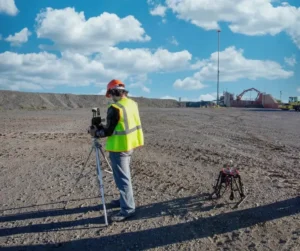
Ultimately, the price of a powerline inspection drone is an investment in the future of your grid. By factoring in all the elements and considering the long-term gains, you can make an informed decision that optimizes both safety and budget, keeping your powerlines humming along confidently.
Drone Pilot Salary
Image of a drone pilot operating a console with a panoramic view of power lines from the drone’s perspective
The skies are buzzing with opportunity for drone pilots, and the field of powerline inspection is a particularly lucrative corner of this exciting industry. But just how much can you expect to earn as a drone pilot in this specialized niche? Buckle up, because we’re about to take flight into the world of drone pilot salaries in powerline inspection.
Factors Affecting Earnings:
Salary in the powerline inspection drone field, like any other job, is influenced by a multitude of factors. Let’s explore some key ones:
- Experience: As with any profession, experience takes center stage. Novice pilots entering the field can expect a starting salary around the national average for drone pilots, which currently sits at around $82,000 annually. However, seasoned professionals with years of successful inspections under their belt can command salaries well above six figures.
- Location: Geography plays a role too. Urban areas with dense power grids often offer higher salaries compared to rural regions with sparser infrastructure. Cost of living also comes into play, with high-cost cities like San Francisco or New York typically seeing inflated salaries compared to smaller towns.
- Company Size and Type: Large utility companies and established drone service providers generally offer competitive salaries and benefits packages. Smaller startups or freelance gigs might offer lower base pay but potentially higher hourly rates or profit-sharing opportunities.
- Certifications and Specializations: Additional certifications in areas like thermography, LiDAR, or advanced flight maneuvers can make you a more attractive candidate and boost your earning potential.
Earning Potential:
With all these variables in mind, what can you realistically expect to earn as a powerline inspection drone pilot? Here’s a breakdown:
- Hourly Rates: Freelance pilots can command hourly rates ranging from $35 to $150, with the median hovering around $85. Full-time positions typically offer fixed salaries, with an average range of $80 to $120 per hour.
- Annual Salary: For full-time pilots, annual salaries can vary widely depending on the factors mentioned above. The median annual salary for powerline inspection drone pilots falls somewhere between $61,000 and $100,000, with top earners exceeding $120,000.
The Future of Flight:
The demand for skilled drone pilots in powerline inspection is projected to soar in the coming years, driven by factors like aging infrastructure, increased safety concerns, and the cost-effectiveness of drone-based inspections. This means even brighter career prospects and potentially even higher salaries for pilots entering the field now.
So, if you’re looking for a career with exciting technology, competitive pay, and the chance to make a real difference in the world, powerline inspection drone piloting might just be the perfect flight path for you. Just remember, experience, location, and specialization can significantly impact your earnings, so invest in your skills and chart your course wisely to reach those sky-high salary goals.
Final Words:
Powerline inspection drones are not just futuristic gadgets; they’re the present and future of grid maintenance. By offering enhanced efficiency, improved safety, and data-driven insights, these aerial marvels are playing a crucial role in keeping our power grid humming along smoothly. So, the next time you flip on a switch and light up your world, remember the silent guardians soaring above, ensuring a steady flow of electricity for all.



